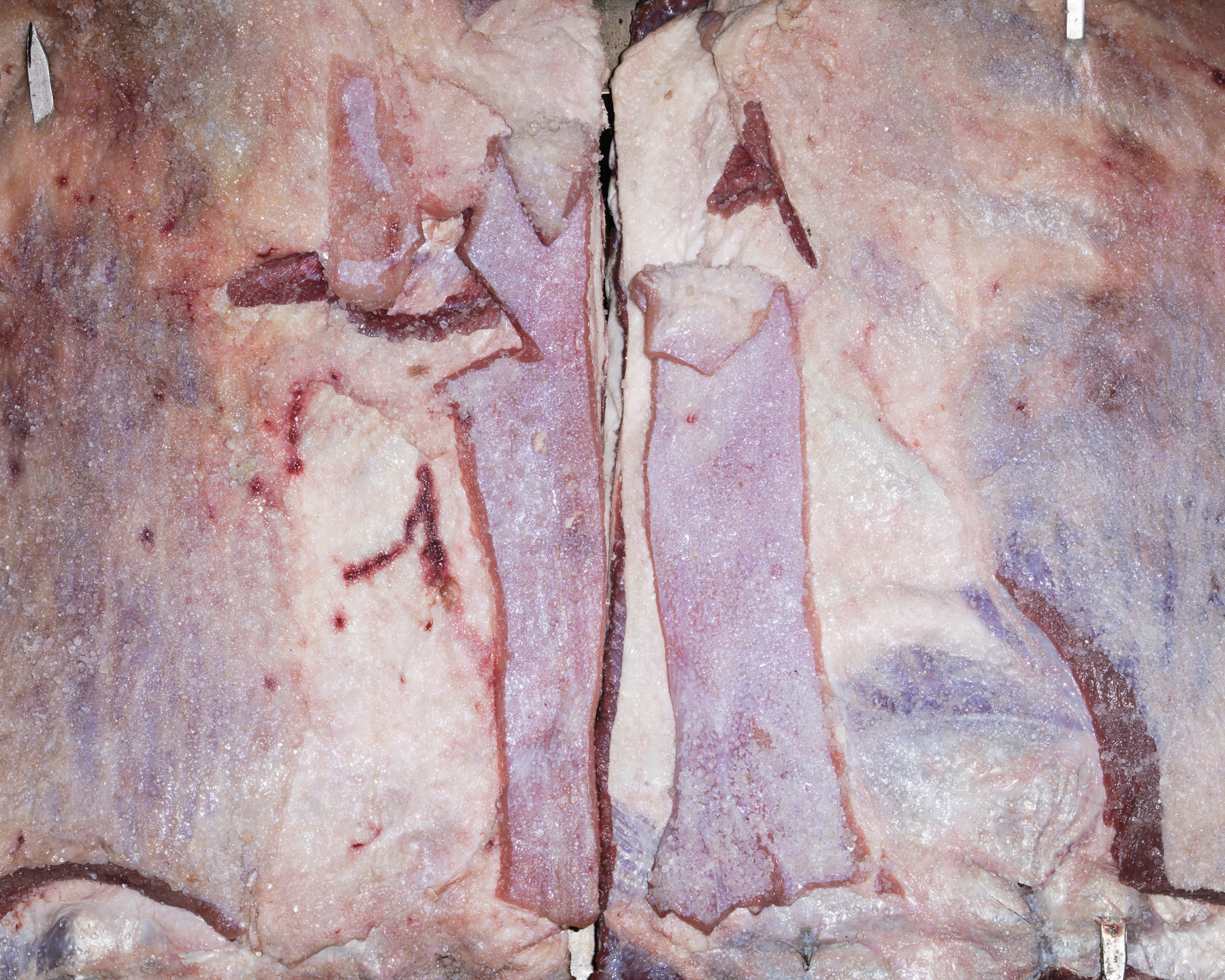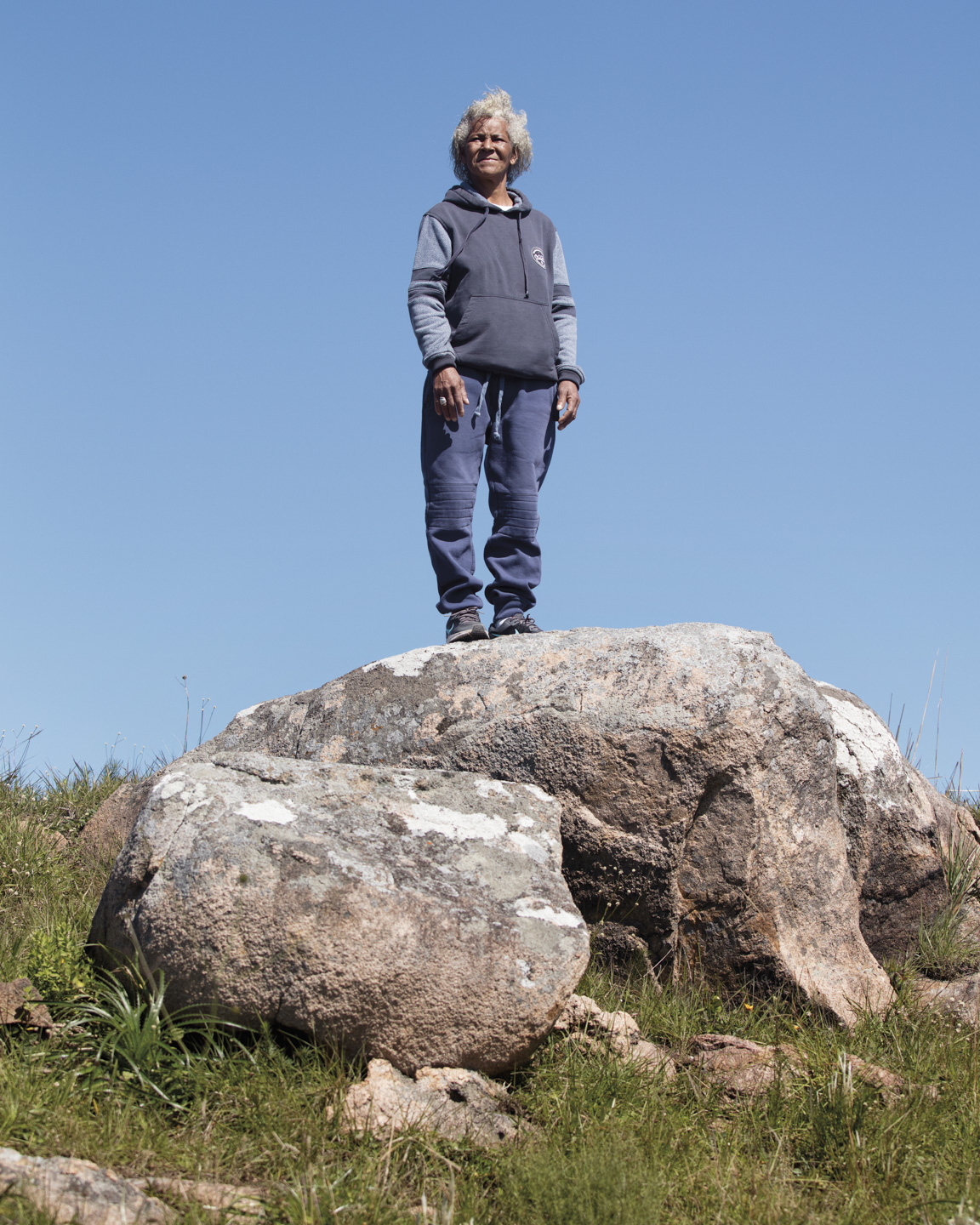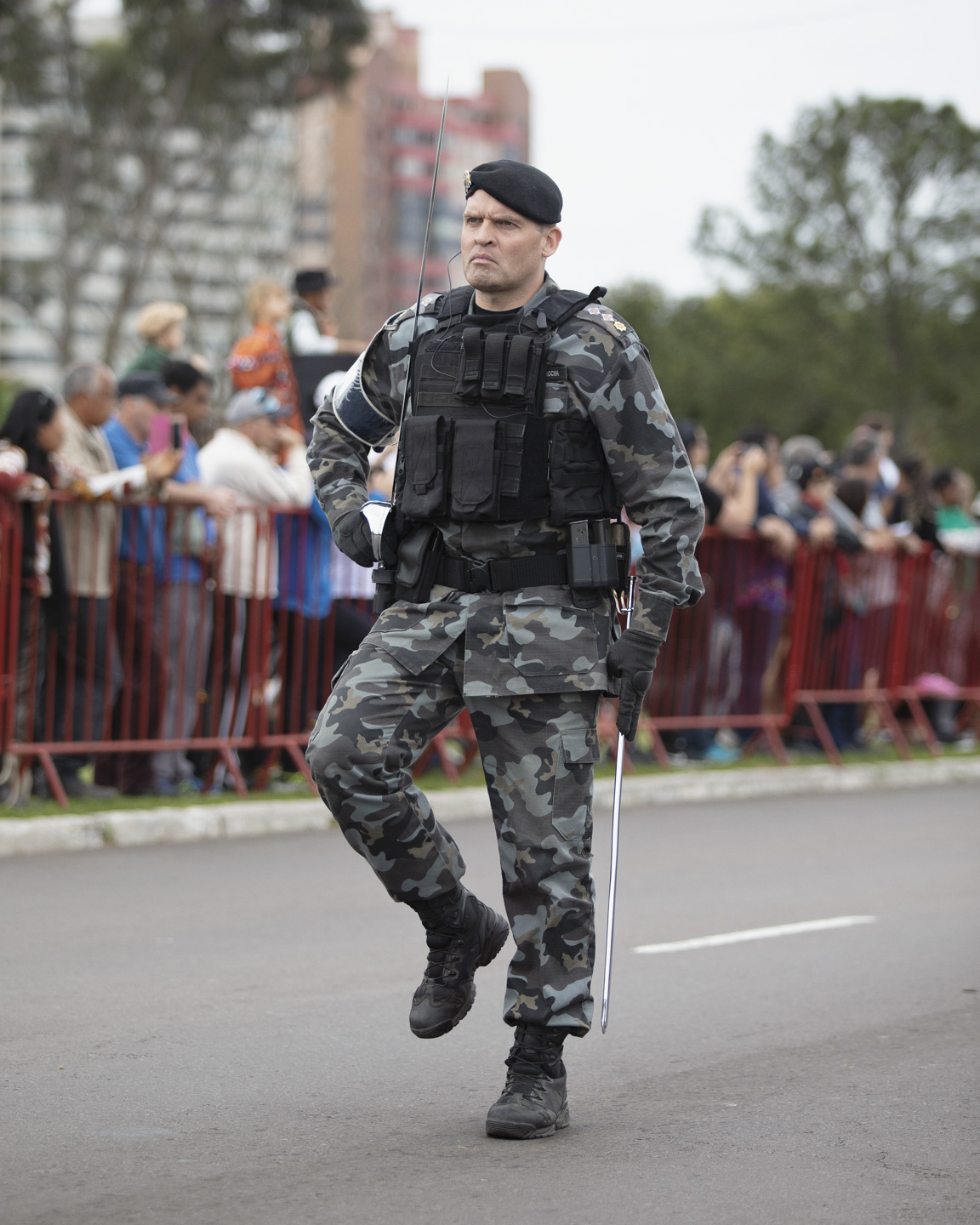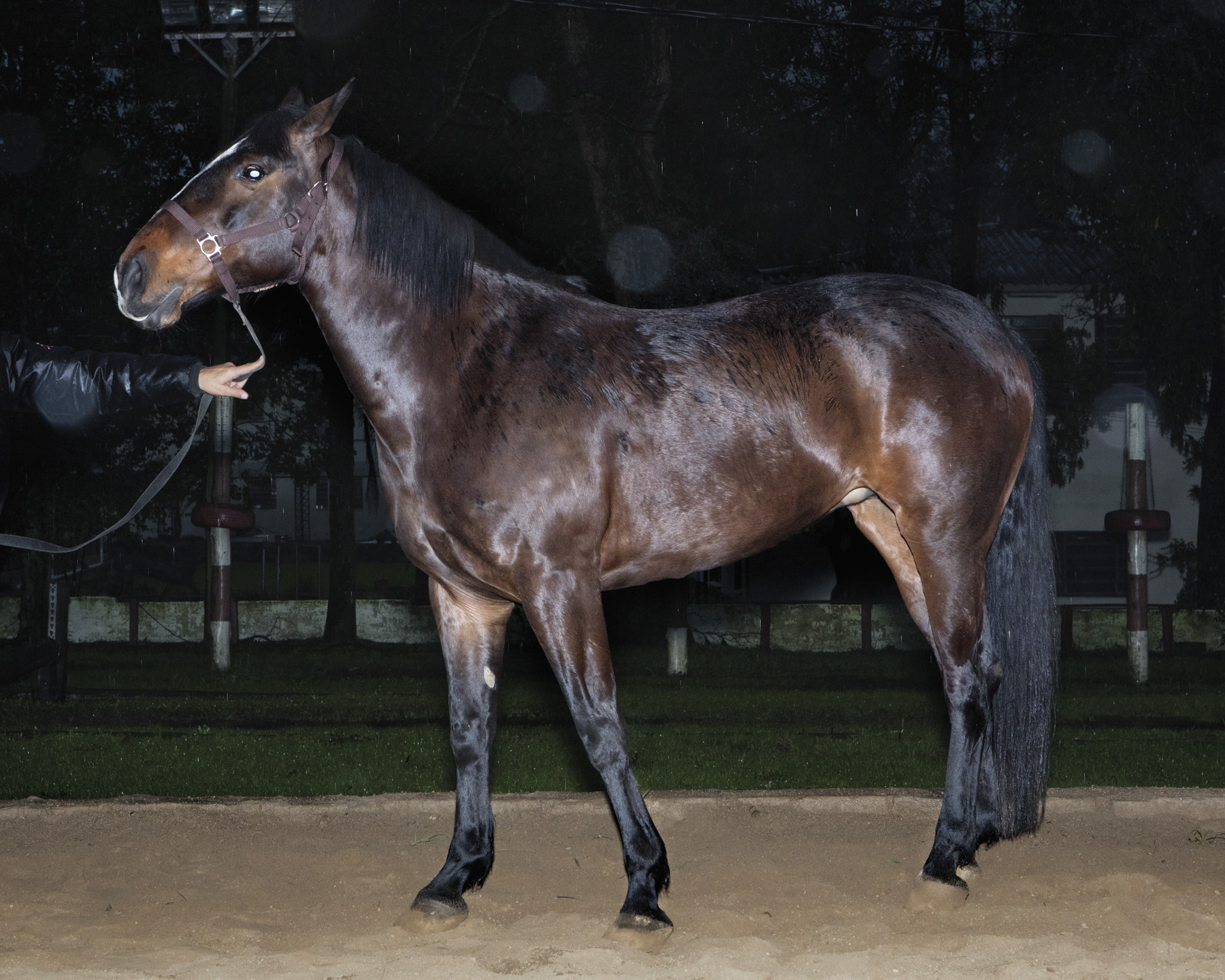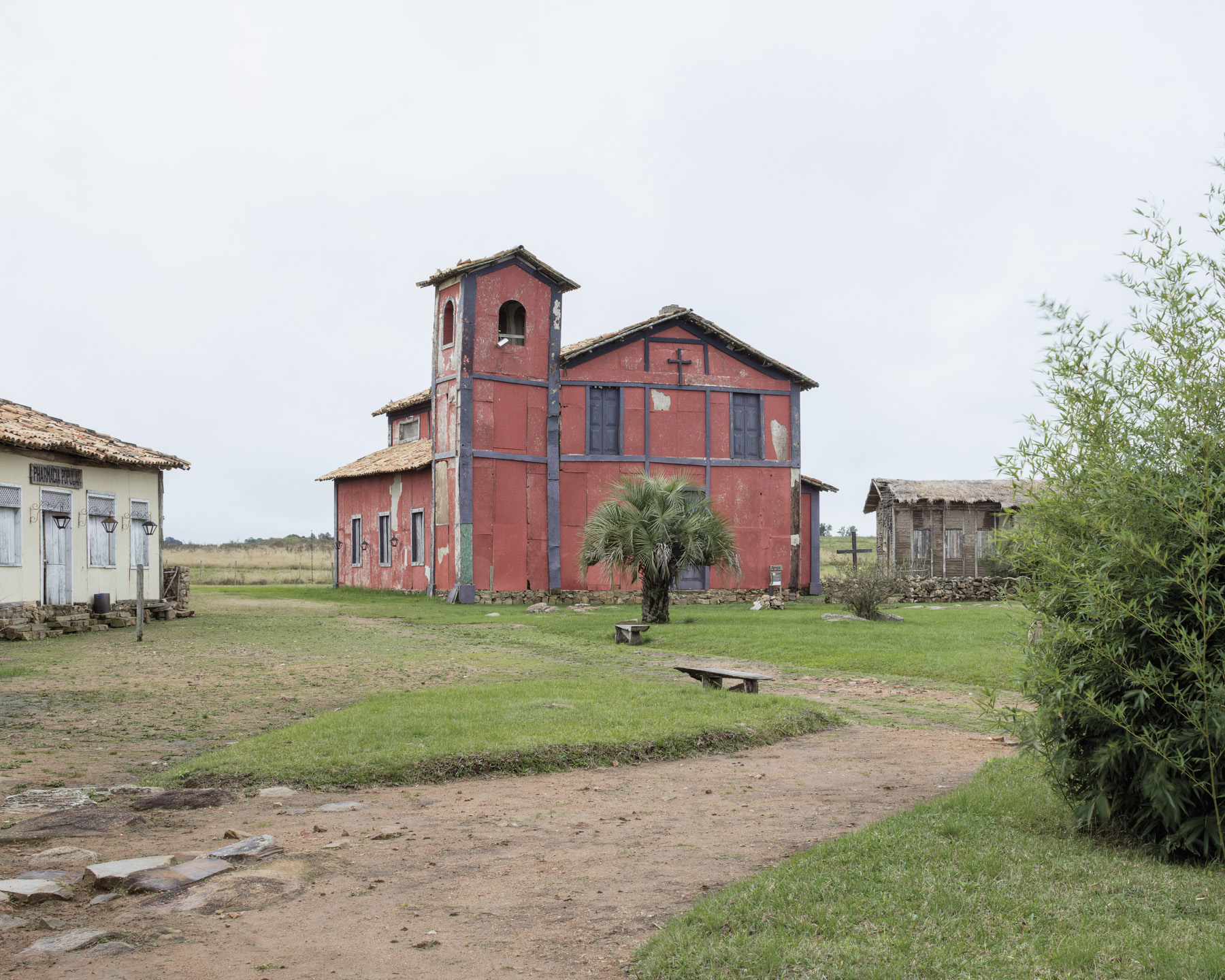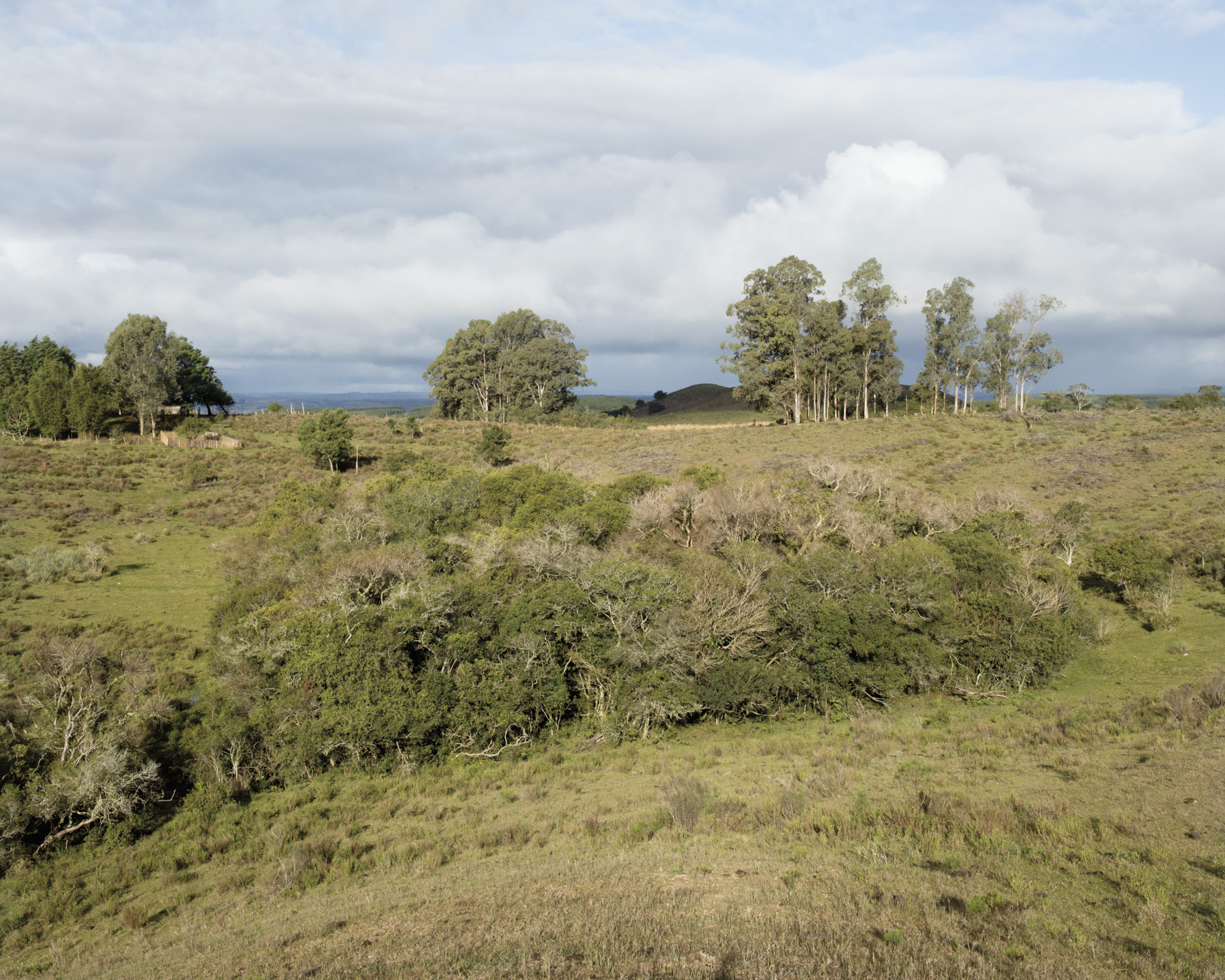Farroupilha (2020) / Farroupilha (2020)
Fotolivro
24×34 cm / 224 páginas / 116 fotografias coloridas
Editora Madalena / 1500 exemplares / ISBN 978-85-69557-23-4
Design: Celso Longo
Textos: Jocelito Zalla, Ronaldo Entler e André Penteado
1.
Farroupilha é a terceira parte do projeto de longo prazo Rastros, Traços e Vestígios que engloba, também, Cabanagem (2015) e Missão Francesa (2017) e que foi pensado como uma pentalogia que se completará com os livros Independência e Invasão.
O projeto foi criado a partir da ideia de que se pode pensar a existência de um paralelo entre o trabalho do fotógrafo e o do historiador: se tanto a fotografia quanto a historiografia, a princípio, partem da realidade – de algo que estava presente na frente da câmera e de um fato que ocorreu – pode-se dizer, em contrapartida, que ambas são resultados de decisões ideológicas daqueles que as produzem. Apesar disso, as duas são, muitas vezes, compreendidas como “verdades”.
A um acontecimento histórico é dado um nome específico, o que o faz parecer uma espécie de fato indubitável e bem delimitado. Porém, ele é o resultado do desdobramento de um número infinito de ações individuais e coletivas, tanto planejadas quanto inconscientes. E, a partir delas, um outro número infinito de consequências se revela, sendo que a maior parte delas não encontra lugar nas narrativas. Então, o desconhecido constitui uma dimensão significativa da história.
Interessa-me refletir sobre a dualidade entre a complexidade da realidade e a necessidade política de produzir sínteses.Assim, penso a história como um acúmulo de camadas de interpretação criadas pelos mais diversos atores políticos.
Foi relevante na escolha dos temas do projeto, o fato de não possuírem iconografia fotográfica de época, pois não ter que dialogar com fotografias históricas me propiciou maior liberdade na criação de imagens que conectassem presente e passado.
Todas as fotografias do projeto tiveram alguma relação com os fatos que os inspiraram, que foram dos mais diversos tipos: um local onde algo ocorreu, um lugar que foi nomeado para homenagear esse fato, um documento sobre o ocorrido, o local onde o documento é guardado, o descendente de um personagem que participou do caso, um monumento homenageando esse personagem, um quadro representando essa figura, a pessoa que garante a segurança desse quadro, pessoas que homenageiam esse fato, a comida que elas comem ao celebrar esse ocorrido e assim por diante.
2.
A Revolução Farroupilha, em muitos aspectos, é a antítese da Cabanagem. Apesar de ter sido concomitante – ocorreu entre 1835 e 1845 – aconteceu na região sul do país, teve origem na elite que se sentia prejudicada pela política econômica do Império e causou muito menos mortes.
Apesar da derrota e do infame evento conhecido como Traição dos Porongos, que ocorreu no fim da revolta e causou o extermínio do batalhão dos Lanceiros Negros, seus líderes são considerados heróis. Com o passar dos anos, a Farroupilha transformou-se em um dos principais fatos principais da mitologia regional, foi apropriada pelo movimento conservador e hoje é celebrada anualmente. Sua história aparece em diversos livros, filmes e é citada no hino do estado do Rio Grande do Sul.
O livro é constituído por um conjunto de inventários de temas como: o Palácio Farroupilha – a assembléia legislativa do Rio Grande do Sul –, o Acampamento Farroupilha – evento que acontece anualmente em Porto Alegre –, o desfile da Brigada Militar no 20 de setembro – data do início da Farroupilha –, o Cerro dos Porongos – o palco do massacre –, ativistas do movimento negro gaúcho – que retomam a imagem dos Lanceiros Negros –, atores amadores que participam de uma peça sobre a revolução, retratos de “Prendas” – forma como são chamadas as mulheres do movimento tradicionalista gaúcho – e monumentos, entre outros. A narrativa construída é uma sequência desses inventários que, de tempos em tempos, são “contaminados” por imagens uns dos outros.
Farroupilha propõe a discussão sobre como um fato histórico é apropriado e recriado a posteriori, de acordo com os interesses ideológicos dos grupos que lutam pelo poder.
Photobook
24×34 cm / 224 pages / 116 color photographs
Editora Madalena / 1500 copies / ISBN 978-85-69557-23-4
Design: Celso Longo
Texts: Jocelito Zalla, Ronaldo Entler and André Penteado
1.
Farroupilha is the third part of the long-term project Rastros, Traços e Vestígios (Tracks, traces and vestiges), which also includes Cabanagem (2015) and Missão Francesa (2017) and which was conceived as a pentalogy that will be completed with the books Independência (Independence) and Invasão (Invasion).
The project was based on the idea that a parallel can be thought to exist between the photographer’s work and that of the historian: if both photography and historiography, in principle, are based in reality — on something that was present in front of the camera, and of a fact that took place —, one could say that, on the other hand, both are the result of ideological decisions made by those who produce them. Despite this, both are often seen as “truths”.
A historical event is given a specific name, which makes it seem like some sort of indubitable and well-defined fact. However, an event is the result of the unfolding of an infinite number of individual and collective actions, both planned and unconscious. And, based on these, another infinite number of consequences are revealed, most of which have no place in the narratives. Thus, the unknown makes up a significant dimension of history.
I am interested in reflecting on the duality between the complexity of reality and the political need to produce syntheses. Therefore, I think of history as an accumulation of layers of interpretation created by the most diverse political actors.
It was relevant in choosing the themes of the project, the fact that they do not have photographic iconography of the time, since not having to dialogue with historic photographs allowed me more freedom in creating images that connected present and past .
All the photographs in the project relate in some way to the wide variety of facts that inspired them: a location where something happened, a place nominated to honor this fact, a document on the event, the location where the document is stored, the room where it is studied, the descendant of a character who took part in the event, a monument honoring that character, a painting that represents them, the person who safeguards that painting, the people who honor that fact, the food they eat to celebrate the event, and so on.
2.
The Farroupilha Revolution, in many aspects, is the antithesis of Cabanagem. Although it was concomitant – it occurred between 1835 and 1845 – it took place in the southern region of the country, originated among the elite who felt aggrieved by the Empire’s economic policy and caused far fewer deaths.
Despite the defeat and the infamous event known as the Porongos Betrayal, which occurred at the end of the revolt and caused the extermination of the Black Lancers battalion, its leaders are considered heroes. Over the years, Farroupilha became one of the main facts of regional mythology, was appropriated by the conservative movement and today is celebrated annually. Its history appears in several books, films and is quoted in the Rio Grande do Sul state anthem.
The work consists of a set of inventories of themes such as: the Farroupilha Palace – the legislative assembly of Rio Grande do Sul -, the Farroupilha Camp – an event that takes place annually in Porto Alegre -, the Military Brigade parade on September 20 – the date of the beginning of Farroupilha -, the Cerro dos Porongos – the setting of the massacre -, activists from the gaúcho black movement – who take up the image of the Black Lancers -, amateur actors who take part in a play about the revolution, portraits of “Prendas” – the way women from the gaucho traditionalist movement are called – and monuments, among others. The narrative constructed is a sequence of these inventories which, from time to time, are “contaminated” by each other’s images.
Farroupilha proposes a discussion on how a historical fact is appropriated and recreated a posteriori, according to the ideological interests of the groups fighting for power.


